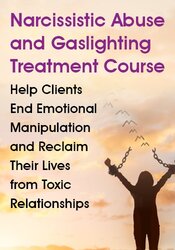Recognizing the Six Tell-Tale Signs of Narcissistic Abuse

Many of us have worked with clients whose self-worth has been quietly eroded over time, often without them realizing how or why. Dr. Ramani Durvasula, a leading expert in narcissistic abuse, offers a clear and powerful framework to help us understand what’s actually happening in these relationships and how we, as clinicians, can begin to repair the damage.
Understanding the Abuse: The “DIMMER” Framework
Narcissistic abuse isn’t always loud or explosive. In fact, it’s often defined by a series of patterns that gradually shrink a person’s sense of self. There are six core behaviors—summed up in the acronym DIMMER—that characterize narcissistic abuse:
- Dismissiveness
- Invalidation
- Minimization
- Manipulation
- Entitlement
- Rage
Clients exposed to narcissistic abuse may endure these dynamics daily, especially if they are still in close contact with the narcissistic individual. Over time, this chronic exposure leads to feelings of worthlessness, confusion, anxiety, and a profound loss of self-trust.
These behaviors are not just emotionally painful. They’re deeply destabilizing. They rob the client of intersubjectivity, or the ability to be fully seen, heard, and held in a relationship without fear that their autonomy or dissent will cost them love or connection.
The Origins of Self-Blame
When narcissistic abuse originates in childhood, the impact is especially profound. A narcissistic caregiver does not regard the child as a separate, valid person, but instead treats the child’s needs as burdensome. Over time, the child internalizes the caregiver’s resentment, shame, and guilt.
The result? The child learns to suppress their own needs in order to preserve the attachment, no matter how dysfunctional it is. In adulthood, this can look like chronic self-blame, hypervigilance in relationships, a tendency to cater to others' needs at the expense of their own, and difficulty recognizing emotional abuse
How to Help Clients Reclaim the Subjective Self
For clients who grew up with narcissistic caregivers or are currently in narcissistically abusive relationships, therapy becomes an “aftermarket add-on,” as Dr. Ramani puts it. Our work is to help them develop a sense of subjectivity—the felt knowledge that they matter, that their needs are valid, and that they are allowed to take up space.
This isn’t easy work. It’s emotionally demanding. And it requires a deep well of what James Shaw calls therapeutic love: an attuned, consistent presence that says “You deserve to be fully seen. You are not too much. You are not selfish for having needs.”
How to Know It’s Narcissistic Abuse
- Be on the lookout for the subtle patterns of DIMMER behaviors in your clients’ relationships. These aren’t always dramatic, but their cumulative effect is deeply damaging.
- Explore early childhood dynamics and how clients may have internalized narcissistic abuse as their own guilt or shame.
- Offer clients corrective experiences in the therapy room by fostering intersubjectivity through empathy, validation, and consistent relational safety.
- Recognize that healing requires time and therapeutic love. It’s our ability to hold space for the client's subjective self that opens the door to transformation.
This work is not easy, but it is deeply meaningful. Helping clients reclaim their sense of self after narcissistic abuse is one of the most profound gifts therapy can offer.

This one-of-a-kind course will give you the strong foundation you need to identify this hidden abuse, effectively respond to it as a therapist, and help these clients reclaim their lives.




